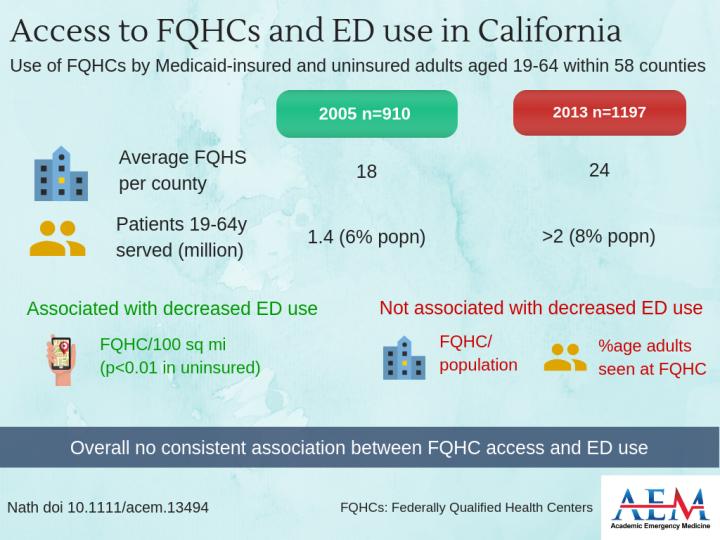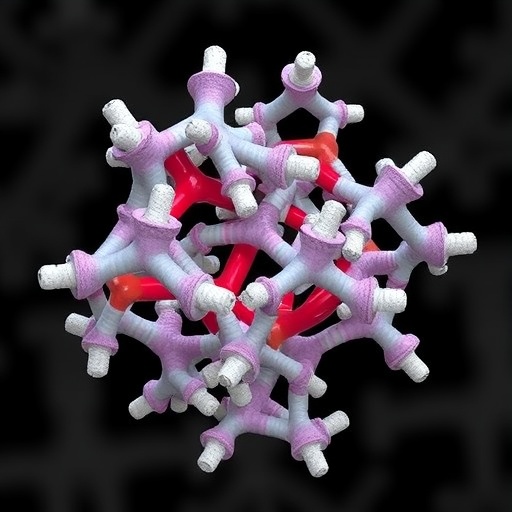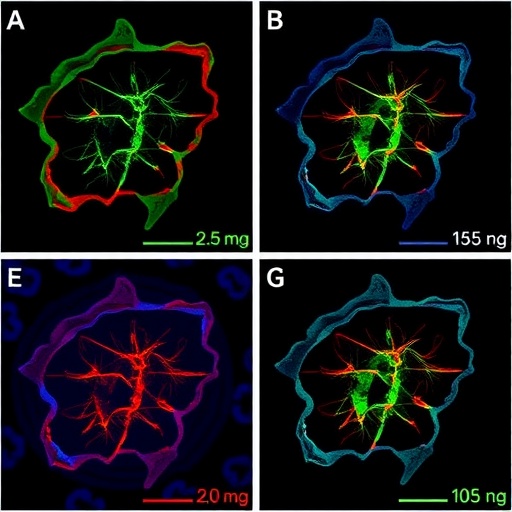
Credit: LAUREN MALONEY, MD, STONY BROOK MEDICINE
DES PLAINES, IL — There is no association between access to federally qualified health centers (FQHCs) and emergency department visits for either uninsured or Medicaid-insured patients. That is the conclusion of a study to be published in the February 2019 issue of Academic Emergency Medicine (AEM), a journal of the Society for Academic Emergency Medicine (SAEM).
The lead author of the study is Julia B. Nath, MD, a resident in the University of Chicago Internal Medicine Residency Program, Chicago.
The study underscores the importance of investigating additional intervention points beyond nonspecific primary care access in the effort to reduce emergency department overuse among vulnerable populations.
Commenting on the study is Jeremiah Schuur, MD, MHS, chair of the Department of Emergency Medicine at The Warren Alpert Medical School of Brown University and physician-in-chief for emergency medicine at Lifespan. Dr. Schuur, an expert in quality, patient safety measurement and policy, is also the chief of the Division of Health Policy Translation, the Director of Quality, Patient Safety and Performance Improvement for the Department of Emergency Medicine of the Brigham and Women’s Hospital, and an associate professor of medicine (emergency) at Harvard Medical School:
“The analysis by Nath et al will surprise many because it did not show a clear or consistent association between the density of Federally Qualified Health Centers (FQHCs) and reduced use of emergency departments by patients with Medicaid and the uninsured. This should not be surprising because while we know that FQHCs provide important access to care and a broad range of services to this population, we also know that access to traditional primary care is not always effective in reducing emergency department use, as patients often decide to seek care at times when FQHCs aren’t open or for conditions which FQHCs are not capable of addressing.”
###
ABOUT ACADEMIC EMERGENCY MEDICINE
Academic Emergency Medicine, the monthly journal of Society for Academic Emergency Medicine, features the best in peer-reviewed, cutting-edge original research relevant to the practice and investigation of emergency care. The above study is published open access and can be downloaded by following the DOI link: 10.1111/acem.13494. Journalists wishing to interview the authors may contact Stacey Roseen at [email protected].
ABOUT THE SOCIETY FOR ACADEMIC EMERGENCY MEDICINE
SAEM is a 501(c)(3) not-for-profit organization dedicated to the improvement of care of the acutely ill and injured patient by leading the advancement of academic emergency medicine through education and research, advocacy, and professional development. To learn more, visit saem.org.
Media Contact
Stacey Roseen
[email protected]
708-606-7120
Related Journal Article
http://dx.




